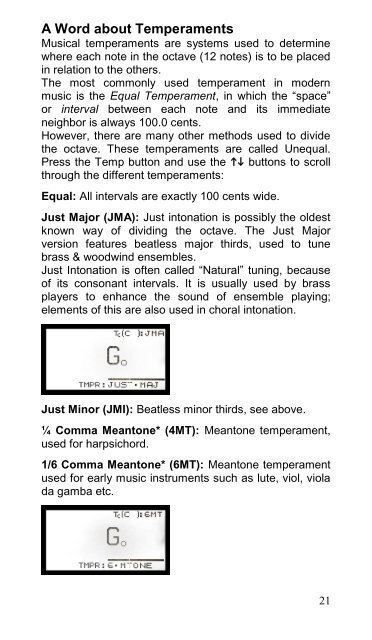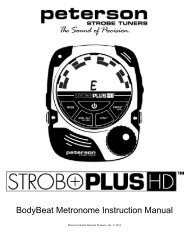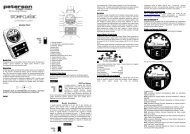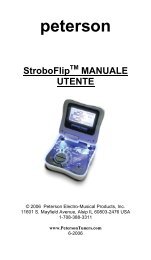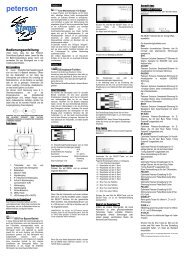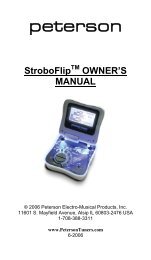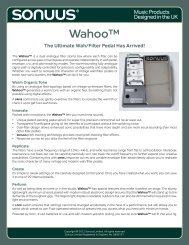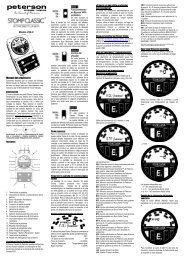Stroboflip Manual - Peterson Tuners
Stroboflip Manual - Peterson Tuners
Stroboflip Manual - Peterson Tuners
You also want an ePaper? Increase the reach of your titles
YUMPU automatically turns print PDFs into web optimized ePapers that Google loves.
A Word about Temperaments<br />
Musical temperaments are systems used to determine<br />
where each note in the octave (12 notes) is to be placed<br />
in relation to the others.<br />
The most commonly used temperament in modern<br />
music is the Equal Temperament, in which the “space”<br />
or interval between each note and its immediate<br />
neighbor is always 100.0 cents.<br />
However, there are many other methods used to divide<br />
the octave. These temperaments are called Unequal.<br />
Press the Temp button and use the buttons to scroll<br />
through the different temperaments:<br />
Equal: All intervals are exactly 100 cents wide.<br />
Just Major (JMA): Just intonation is possibly the oldest<br />
known way of dividing the octave. The Just Major<br />
version features beatless major thirds, used to tune<br />
brass & woodwind ensembles.<br />
Just Intonation is often called “Natural” tuning, because<br />
of its consonant intervals. It is usually used by brass<br />
players to enhance the sound of ensemble playing;<br />
elements of this are also used in choral intonation.<br />
Just Minor (JMI): Beatless minor thirds, see above.<br />
¼ Comma Meantone* (4MT): Meantone temperament,<br />
used for harpsichord.<br />
1/6 Comma Meantone* (6MT): Meantone temperament<br />
used for early music instruments such as lute, viol, viola<br />
da gamba etc.<br />
21


